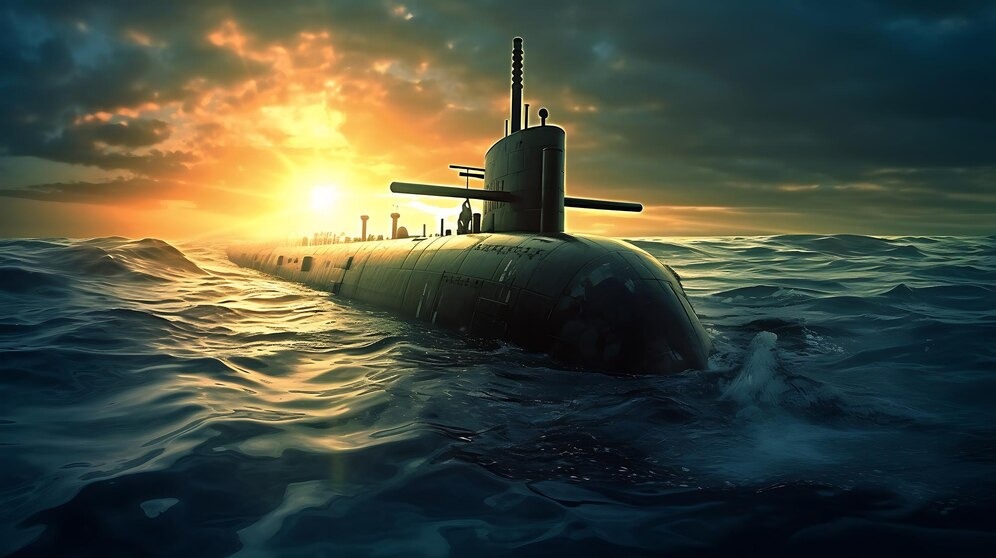105 years after women joined the US Navy, the force took a major step towards gender integration and commissioned the first fully integrated submarine built for male and female sailors.
The vessel has been termed “a symbol of progress” that is “breaking barriers as it protects our shores.”
A female crewmember appeared in the video and spoke about the value of this milestone for inclusivity. “It is an honor that we are the first to have this slice of that particular narrative,” she said. A narrator’ voice added that the USS New Jersey is “a testament to the strength that diversity brings to our Navy.”
Women officially started serving in the US Navy in 1908 with the establishment of the Navy Nurse Corps. A contract nurse from the Spanish-American War named Esther Voorhees Hasson was appointed superintendent. Hasson was joined by 19 other women who together formed the “Sacred Twenty.”
In the 20th century, the two World Wars resulted in a manpower shortage and the US Navy opening its doors to women. The most famous example of this was the Women Appointed for Voluntary Emergency Services (WAVES), authorized by President Franklin D. Roosevelt with Public Law 689. The WAVES was created to have women serving in shore positions to free up male service members for deployment in Europe or the Pacific.
Many women, however, would ultimately serve on the front during the war. Some were even held as prisoners of war in the Pacific theatre and honored for their valor.
The ban on women staffing subs was lifted in 2010 by then-Defense Secretary Robert Gates (who served under Democratic President Barack Obama), and the first female officers joined the submarine force the following year.
In 2016, women officers were posted on board submarines in the US Navy. Since then, women have served as XOs and went on to command submarines.
The Navy Times has noted that several trailblazers have risen to positions of prominence, such as Lt. Cmdr. Amber Cowan, who became the first woman to serve as the executive officer of a submarine aboard the ballistic missile submarine Kentucky in 2022, and Master Chief Information Systems Technician (Submarine) Angela Koogler who became the first woman to serve as a ‘chief of the boat’ aboard the nuclear ballistic missile submarine Louisiana that same year.

In 2020, the submarine force decided to expand the integration of enlisted women across homeports and all submarines.
The first cadre of female submariners was built using a top-down approach instead of from the bottom-up as in previous integrations. This resulted in female officers paving the way, followed by senior enlisted leaders to ensure junior enlisted females had solid support systems to rely on.
Between 2015 and 2018, the Navy made four separate calls for female Sailors to convert into submarine ratings. Currently, over 200 enlisted female Sailors are serving as part of eight crews.
The female integration into the submarine force had to take into account habitability modifications to maintain privacy requirements.
Only the current guided-missile submarines (SSGN) and two ballistic missile submarines (SSBN) have women on board. Despite women shattering glass ceilings, the Navy’s subs had all been designed for a male-only crew, with female sailors forced to make do with the existing facilities and living arrangements on board.
Going forward, all future Columbia-class ballistic missile submarines and all Virginia-class fast attack submarines, starting with the USS New Jersey (SSN 796), will have enlisted women in their crews.
The Ohio class was initially chosen as modifications were relatively modest in scope. Future Virginia-class, USS New Jersey and beyond, and Columbia-class submarines are being built gender-neutral and will not require any habitability modifications. In other words, there will be available male and female berthing and head facilities to maintain privacy requirements.
According to military news outlet Stars and Stripes, the USS New Jersey’s washrooms and sleeping dorms have been designed with more doors to increase sailors’ privacy in those areas.
From this perspective, the induction of the USS New Jersey has been a milestone in integrating enlisted women into the force.
The ceremony marked the conclusion of a years-long process to commission the USS New Jersey. It is the third Navy ship named after the US state, succeeding the BB-62 battleship that sailed in World War II, the Korean War, and the Vietnam War.
In naval tradition, warships reincarnate after their names are given to another vessel post-retirement. The military branch said the fast-attack submarine was commissioned at Naval Weapons Station Earle in Middletown, New Jersey.
The 377-foot-long submarine has a 34-foot beam, can dive to depths greater than 800 feet, and operates at speeds over 25 knots. New Jersey has a crew of nearly 135 Navy personnel.
USS New Jersey fast-attack submarines are multi-mission platforms that enable five of the Navy’s maritime strategy core capabilities: sea control, power projection, forward presence, maritime security, and deterrence.
They are designed to excel in anti-submarine warfare, anti-ship warfare, strike warfare, special operations, intelligence, surveillance and reconnaissance, irregular warfare, and mine warfare. Fast-attack submarines project power ashore with special operations forces and Tomahawk cruise missiles in the prevention or preparation of regional crises.




